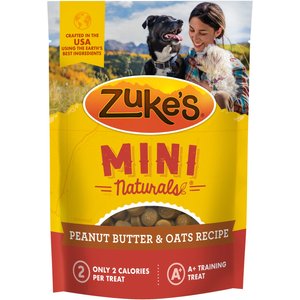Vaccinations are a vital part of preventative healthcare, especially for puppies. Not too long ago, the scourges of distemper and rabies, and more recently parvovirus, killed an untold number of dogs. Now, these diseases are almost entirely preventable when dogs receive vaccinations on an appropriate schedule.
It’s important to understand the rationale behind when and why we give vaccines as well as the times when some vaccines are not needed. By doing so, you can work closely with your veterinarian to determine the best way to protect your dog against vaccine-preventable diseases.
How Do Vaccines Work?
What Vaccines Do Dogs Need?
Vaccinations are given to prevent disease, not to treat dogs once they are sick. A list of dog vaccines should be divided into two categories: core and noncore.
Core Vaccines
Recommended for almost every pet, core vaccines protect dogs from common and/or severe contagious diseases.
Core vaccines for dogs include:
- Rabies – considered a core vaccine when required by law or wherever rabies is present
- Canine Distemper Virus (CFV)
- Canine Parvovirus (CPV or parvo)
- Canine Adenovirus-2 (CAV-2) – infectious hepatitis
Rabies Vaccine
Rabies is a fatal, viral disease that attacks the central nervous system and usually is transmitted through the bite of an infected animal. Wildlife like coyotes, bats and skunks frequently are carriers of the virus.
Because there is no treatment available for rabies in dogs, prevention is critical. State laws and the vaccine label indicate when a dog should first be vaccinated, but it’s usually at 12 weeks of age or soon thereafter. A booster shot is required after one year. Depending on where you live and the type of vaccine used, boosters may occur annually or every three years.
DAP Vaccine (Distemper, Adenovirus and Parvovirus)
The DAP combination shot immunizes dogs against canine distemper, canine adenovirus type 2 and canine parvovirus. All three diseases are serious and highly contagious.
- Distemper: This viral disease attacks the respiratory, gastrointestinal and nervous systems as well as the skin. Symptoms include lethargy, runny eyes and nose, loss of appetite, vomiting, diarrhea, thickened skin on the nose and footpads, coughing, difficulty breathing, seizures and paralysis.
- Adenovirus type-2: The canine adenovirus type 2 vaccine defends against a potentially fatal form of liver disease as well as a type of kennel cough.
- Parvovirus: Parvovirus results in vomiting, diarrhea, bone marrow suppression and, in some cases, heart failure. With severe infections, death is likely without aggressive treatment.
The initial DAP vaccine should be given to puppies when they are 6–8 weeks of age. Boosters are given every 2–4 weeks until the puppy is 16–20 weeks old. These boosters are essential as immunity provided via the mother’s milk may render the early vaccinations useless. An additional DAP booster at 1 year of age also is needed.
After this point, the immunity provided by the vaccine lasts for at least three years in most cases. Boosters can be given on a three-year schedule, or vaccine titers (a check of distemper, adenovirus and parvovirus antibody levels) can be run and the vaccine given as needed. At this time, most regulatory agencies do not accept a rabies vaccine titer as a substitute for vaccination.
Noncore Vaccines
Noncore vaccines are those not necessary for all pets. When deciding whether to give a dog a noncore vaccine, veterinarians consider the animal’s age, environment, lifestyle and overall health.
Common noncore vaccines for dogs include:
- Bordetella bronchiseptica
- Leptospira
- Borrelia burgdorferi – canine Lyme disease
- Canine Parainfluenza Virus (CPIV)
- Canine Influenza Virus-H3N8 and H3N2 (CIV or dog flu)
Kennel Cough and Flu Vaccinations (Bordetella bronchiseptica, Canine Parainfluenza Virus, Canine Influenza Virus-H3N8 and H3N2)
Kennel cough can have a variety of causes, including Bordetella bronchiseptica bacteria, parainfluenza virus and/or adenovirus type-2. Canine flu, on the other hand, is only caused by the influenza virus; the two most common strains in dogs are influenza virus-H3N8 and influenza virus-H3N2. Infection with all of these microorganisms results in similar symptoms, including coughing, labored breathing, fever, decreased appetite, fever and nasal discharge.
Dogs who are stressed or regularly visit dog parks, daycares or boarding facilities especially are vulnerable to kennel cough and canine flu.
Vaccination schedules depend on the type of vaccine given and patient-specific parameters. For example, intranasal Bordetella vaccines can be given to puppies as young as 3–4 weeks of age and are effective after a single dose, while two doses of canine influenza vaccines are given two to four weeks apart in dogs 6–8 weeks of age or older. Annual boosters for all of these vaccines usually are recommended if the dog remains at significant risk of infection.
Leptospirosis Vaccine
Leptospirosis is a disease caused by infection with Leptospira bacteria. Dogs generally come into contact with Leptospira when engaging in water-related activities near where infected animals have urinated. Leptospirosis can spread from animals to humans.
Once in the body, Leptospira bacteria can cause poor appetite, digestive upset, fever, conjunctivitis and kidney and/or liver failure.
Leptospirosis vaccines offer only partial protection against the disease, and depending on where you live or travel, your dog’s risk of coming in contact with the bacteria may be low. It’s more prevalent in warm, rainy climates. If needed, your veterinarian will administer two initial vaccines two to four weeks apart, and annual boosters.
Lyme Disease Vaccine (Borrelia burgdorferi)
Lyme disease is a tick-transmitted illness that can result in swollen lymph nodes, arthritis and sometimes kidney disease. In order for ticks to transmit Lyme disease, they must be attached to the dog for generally 36–48 hours. Not all dogs develop observable symptoms when infected.
Geography is a major consideration with this vaccine, as Lyme disease is most common in the Northeast, upper Midwest, Mid-Atlantic and along the Pacific coast. Tick prevention is the best defense against Lyme disease and other tick-borne illnesses. If your dog is at very high risk of infection, your veterinarian will give two vaccines two to four weeks apart, plus annual boosters.
Other Dog Vaccines
Other dog vaccinations are available. For example, a rattlesnake vaccine can be given to dogs living in areas with a large western diamondback rattlesnake population who are at high risk for being bitten. A vaccine against canine coronavirus is produced but generally is not recommended since the disease the virus causes is mild and occurs in very young puppies before vaccines usually are given.
Dog Vaccination Schedule: When Should Dogs Get Vaccinated?
Ideally, puppies should start receiving core and any necessary noncore vaccinations when they are 6–8 weeks of age. Booster shots usually are given at three- to four-week intervals until pups are 16–20 weeks old.
The rabies vaccine is a single dose given when the puppy is at least 12 weeks old. Rabies vaccinations are required by law in most parts of the United States. If an older dog has an unknown vaccination history, he usually can be brought up-to-date in two visits scheduled 3–4 weeks apart. Booster vaccines generally are given to adult dogs every 1–3 years, depending on vaccine type and the dog’s risk factors.
Pet parents should note that specifics may vary. Dogs and older puppies who have an unknown vaccination history generally can be caught up in two visits for vaccines given three to four weeks apart.
To help you keep track of your puppy's vaccinations, download our Puppy Vaccinations Tracker printable.
Puppy
Around 8 weeks old
Distemper, adenovirus and parvovirus (DAP); assess need for noncore vaccines
Puppy
Around 12 weeks old
DAP booster; rabies vaccine if 12 weeks or older; assess need for noncore vaccines
Puppy
At least 16 weeks
DAP booster; rabies vaccine if not previously given; assess need for noncore vaccines
Puppy
Around 20 weeks
Possible DAP booster for at-risk puppies
Young Adult
Around 1 year old
DAP booster; rabies vaccine; assess need for noncore vaccines
Young Adult
Annual thereafter
Assess need for DAP booster (often given every 3 years) and noncore vaccines; follow legal and label requirements for rabies vaccine (often given every 3 years)
Middle Aged
Starting at around 7–8 years old (a year or two younger in large breed dogs), begin twice yearly wellness visits with emphasis on screening for age-related diseases
Assess need for DAP booster (often given every 3 years) and noncore vaccines; follow legal and label requirements for rabies vaccine (often given every 3 years)
Senior
Starting at around 10–11 years old (a year or two younger in large breed dogs), continue twice yearly wellness visits with emphasis on screening for and management of age-related diseases
Follow legal and label requirements for rabies vaccine (often given every 3 years); assess need for all other vaccines
FAQs About Dog Vaccinations
Q:
What are the common side effects of vaccines for dogs?
A:Many dogs have no observable vaccine side effects. For those who do, it’s rarely anything too serious. As with people, dogs might feel a little “off” after a vaccination. You may notice swelling or tenderness around the injection site. As long as you don’t see any worsening symptoms and everything returns to normal in a few days, there’s no need for alarm.
With intranasal injections, it’s normal for dogs to experience a day or two of sneezing or a little coughing and a runny nose.
Allergic reactions to vaccines are rare but potentially serious. If you notice hives, itchiness, facial swelling, vomiting, diarrhea and/or difficulty breathing, call your veterinarian immediately.
Q:
How much are dog vaccinations?
Q:
How effective are vaccines for dogs?
More About Dog Vaccines:
Share:











